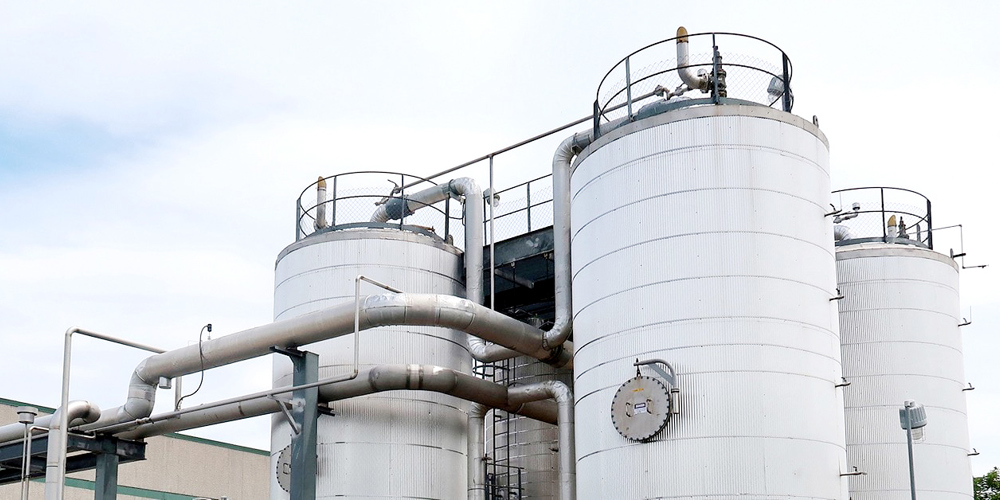Landfill gas (LFG) must go through an extensive conditioning process before it can be used as a source of energy. Steps within this process include treating it to remove impurities like moisture and hydrogen sulfide (H2S).
To accomplish this, the LFG is filtered through large silo-like stainless steel tanks filled with sulfur-reducing media to lower the H2S content. It then flows through a chiller heat exchanger to lower its humidity and temperature, and then continues on to be compressed.
An electric power station was treating LFG and then using the gas for combustion in its three power turbines. While it was treating the LFG, it experienced two significant unplanned downtimes.
One of the downtimes was due to the corrosion of four large 304 stainless steel pressure vessel tanks used to hold the H2S removal media. The other downtime was caused by the failure of a dual path heat exchanger to further dehumidify the processed LFG.
The powerplant operators declared two long lasting Force Majeures (FMs) against the landfill operator. Within their purchase agreement, the FM definition included “equipment failures” and the need to use “best efforts” to remedy a party’s inability to perform its contractual duties.
ESi was retained by the powerplant operator to:
- Perform a root cause investigation of the failed equipment
- Evaluate repair procedures
- Assess the operator’s performance to resume service
Our Approach
ESi performed a non-destructive metallurgical investigation on sections of the steel H2S removal tank walls. Five samples were visually inspected and photographed. Microscopic examination of samples was performed using light microscopy and scanning electron microscopy (SEM) with energy dispersive spectroscopy (EDS).
The inner surfaces of the tanks exhibited severe localized corrosion and pitting. Regions of high sulfur concentration were detected on the surfaces of the cleaned and uncleaned samples.
The examination indicated that sulfur was the main corrosive species of the tanks. It was discovered that high concentrations of sulfur on the surface of the tanks led to the crevice corrosion by breaking down the passive layer of the 304 stainless steel. An analysis for fitness for service per API 579 determined that the tanks were structurally unsound and in need of extensive repair.
The heat exchanger was found to be leaking internally. The ESi laboratory analysis of the heat exchanger’s tubes found no significant corrosion on either the interior or exterior surfaces of the tubes. Further laboratory analysis identified a manufacturing defect in the tube’s longitudinal welds that were likely responsible for the reported leaks.
The heat exchanger was not damaged due to improper operation, but leaked due to pre-existing longitudinal partial penetration welds that apparently grew over time into narrow longitudinal cracks. The cracks were only discoverable under operating conditions when pressure and temperature were applied, and did not appear with the commonly used isothermal pressure testing. A new heat exchanger was constructed as a replacement.
ESi also evaluated the design of the tube heat exchanger with alternative metals of carbon steel shells and stainless steel tubes as its composition was alleged to be the cause of the leakage. However, the original heat exchanger’s construction is commonly used within the process heat transfer industry and is a recognized and generally accepted method of construction within the ASME BPVC.
Services Utilized
Expertise Utilized
The Outcome
Two landfill gas process equipment failures at an electric powerplant caused significant unplanned downtimes and substantial repair procedures. Dr. Alfred Pettinger, ESi Principal and Vice President, testified on the investigation and conclusions. The arbitration panel found both equipment failures to be Force Majeures and that the operator used best efforts to remedy their inability to accept LFG


